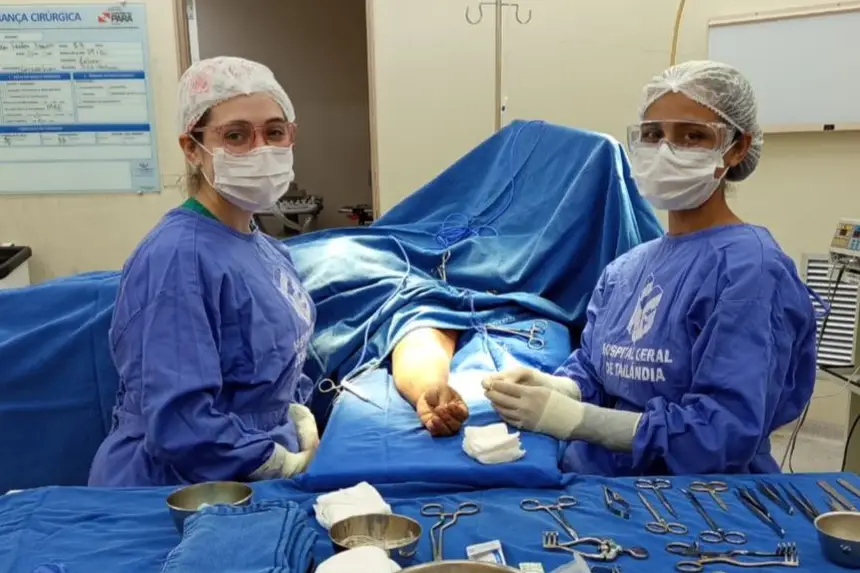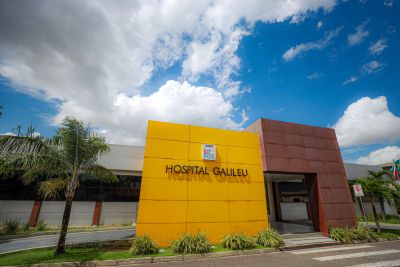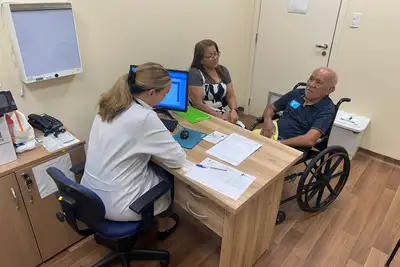HGT performs arteriovenous fistula surgery for hemodialysis patients

The General Hospital of Tailândia (HGT), in the Tocantins integration region, is advancing in the treatment of hemodialysis patients and has performed the first arteriovenous fistula (AVF) surgery, which is an essential support for chronic renal dialysis patients. The procedure is considered the main access route for this type of treatment as it offers more safety and efficiency, in addition to contributing to the quality of life of patients by avoiding complications such as infections and reducing physical, emotional, and financial impacts.
According to vascular surgeon Sannay Valois, both the fistula in the arms and the use of a catheter allow for hemodialysis, but the fistula is the most recommended option as it increases the quality of treatment and has a lower risk of infection. "With the implementation of the hemodialysis service in the region, we have already achieved significant advances. Now, with the performance of the fistula surgery, we can offer more comprehensive care to our own patients," the doctor emphasized.

She further adds that the AVF surgery is responsible for the connection between a vein and an artery, created for access to hemodialysis, usually performed in the upper limbs, arms, forearms, and wrists, where the risk of complications is lower. However, it can also be performed in the lower limbs.
Approval - Patient Nazaré Cíntia, 53 years old, resident of the Palmares District in Tailândia, reported that since the beginning of her hemodialysis treatment, she has been attended by HGT, when the service was only available for hospitalized patients. Now, after four months of sessions, she finally managed to undergo arteriovenous fistula surgery.
"When I was diagnosed as a chronic renal patient, I started all my treatment here at HGT. First, I had sessions with a catheter, then with the permcath, and now, after four months, we managed to perform the fistula surgery."
Nazaré emphasizes that, despite her anxiety about undergoing surgery, she felt safe throughout the entire process leading up to and following the surgery. She underwent preparatory exams, evaluations with specialists, and follow-up. According to the patient, everything was carried out with great care.

"Everything was great, thank God. Performing this procedure in our municipality was very good, both for me and for other colleagues who will also need it. It used to be more difficult to have to travel, but now it is more accessible, both the surgery and doing hemodialysis," she concluded.
Structure – With 20 machines available for hemodialysis, sessions are held from Monday to Saturday, with the capacity to serve patients in three daily shifts. These shifts are being filled gradually as new patients are regulated for the service, according to demand and the criteria defined by the regulation system.
In addition to the sessions, patients have the support of a multidisciplinary team composed of a nephrologist, psychologist, social workers, nutritionist, pharmacists, nurses, and nursing technicians. In total, 25 professionals work at the Hemodialysis Center, including receptionists, coordination team, and Hygiene and Cleaning Service (SHL) professionals.
According to the nurse responsible for the Hemodialysis sector, Jenifer Ribeiro, this was the 10th Hemodialysis Center delivered by the Government of Pará. The service has the capacity to serve up to 120 patients per month, expanding access to chronic renal treatment and representing a significant advance for the health of the local population. "In just the first months of 2025, we have already managed to perform 1,057 hemodialysis sessions and serve 44 patients regulated from other locations. It is a milestone that reinforces our commitment to expanding and improving health care in the state," the nurse highlighted.
"The advancement of hemodialysis services at HGT represents another important step in improving health care in our region. We have managed to structure a modern center, with a qualified team and appropriate technology, to offer even more humanized and efficient treatment to chronic renal patients. We continue to work to expand access and ensure the quality of services provided, always focusing on the well-being of the population," said executive director Eduardo Pereira.
Service: The Public Regional Hospital of Caetés is part of the health network of the Government of Pará, managed by the National Institute of Social and Human Development (INDSH) in partnership with the State Department of Public Health (Sespa).









